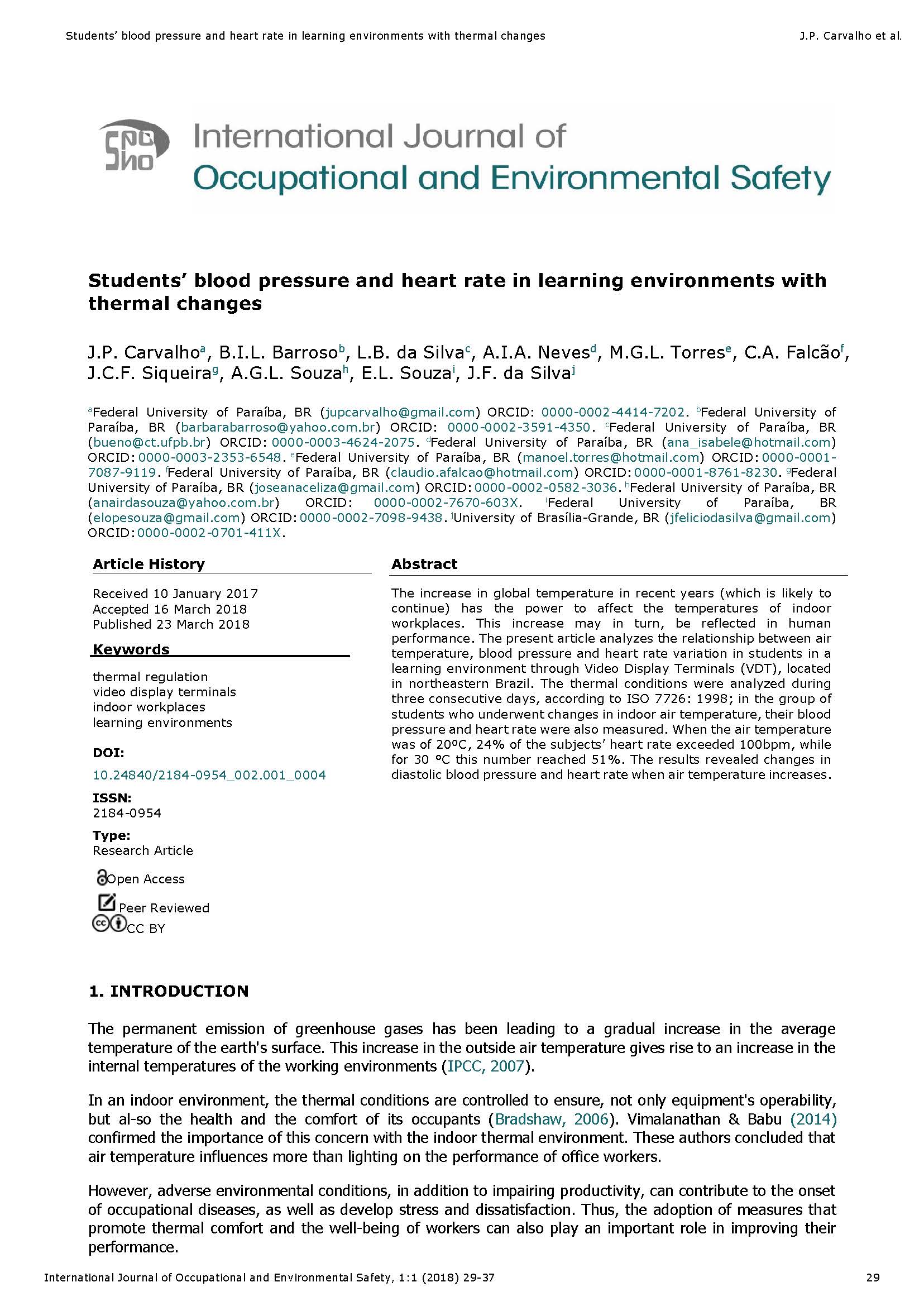Students’ blood pressure and heart rate in learning environments with thermal changes
Main Article Content
Abstract
The increase in global temperature in recent years (which is likely to continue) has the power to affect the temperatures of indoor workplaces. This increase may in turn, be reflected in human performance. The present article analyzes the relationship between air temperature, blood pressure and heart rate variation in students in a learning environment through Video Display Terminals (VDT), located in northeastern Brazil. The thermal conditions were analyzed during three consecutive days, according to ISO 7726: 1998; in the group of students who underwent changes in indoor air temperature, their blood pressure and heart rate were also measured. When the air temperature was of 20ºC, 24% of the subjects’ heart rate exceeded 100bpm, while for 30 °C this number reached 51%. The results revealed changes in diastolic blood pressure and heart rate when air temperature increases.

